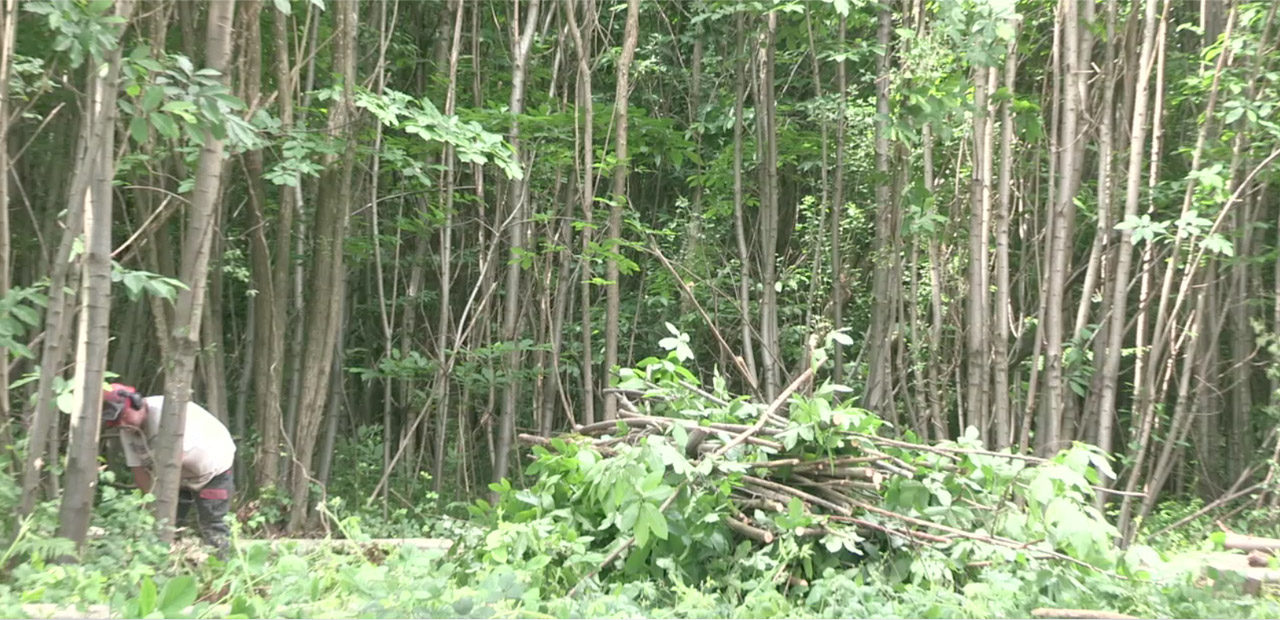Processing
History | Management | Wildlife and the environment | Processing
The raw material that comes into Torry Hill Chestnut Fencing’s yard for processing is in the form of trimmed out chestnut poles on average around 8m long and with a diameter at the butt end of 15-20cm thinning to 3-5cm at the tip. The poles are first “lengthed up” or cut into usable lengths, removing crooked bits, bad knots, bends etc. This is a skilled job which requires an understanding of how the wood will split,and good lengthing up is vital for maximising the amount of usable wood. Waste wood from this process is stored, air-dried and chipped for wood fuel or sold as firewood for woodburning stoves.
Lengths destined for fence posts, for example 1.8m long,will then be peeled to remove the bark, split or sawn into two if of sufficient diameter and pointed using a bandsaw.
Lengths to be cleft into pales are also peeled and are then cleft by hand by palemakers. This is a skilled job which looks easy but in fact requires a long apprenticeship to do well,and which is a source of fascination to all visitors to the business. The round length of wood to be split is placed in a “brake”, a kind of vice to hold it in place, and cleft at first into two and then into pales about 3cm diameter, using a “froe” or “dole axe”, a flat blade set with the sharpened edge on top set on a wooden handle that can then be used as a wedge to lever the length of wood apart.
The pales are then transferred to the fence making machines to be made into traditional rolls of chestnut fencing. These locally made machines, powered by compressed air, use counter-rotating heads to twist wire around the pales and roll up the fencing as it is made.
Finally, the completed rolls of fencing are compressed and palletised for easy transport and handling.
